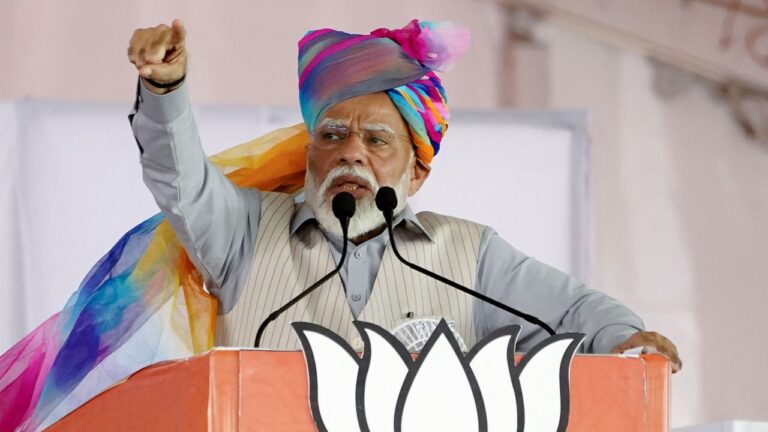Air India’s $400 Million Makeover: Boeing 787-8 Fleet Gets New Interiors
Short summary
Air India has kicked off a major US$400 million retrofit programme to refresh cabins across a large chunk of its legacy fleet. The work on the Boeing 787-8 Dreamliners has started: the first 787 (VT-ANT) was sent to Boeing’s California facility in July, a second is due in October, and both are expected back with new three-class interiors by December 2025. The programme will cover 26 B787-8s, extend to 13 777-300ERs (starting early 2027) and run in parallel with A320neo narrowbody retrofits — with the 787-8 upgrades scheduled to finish around mid-2027. The revamp includes new Business, Premium Economy and Economy seats, refreshed galleys and lavs, modern IFE and a Reliability Enhancement Programme to reduce operational disruptions.
Why this matters — a quick reality check
Think of Air India’s fleet like a smartphone that hasn’t had a major OS and hardware refresh in years. It still works, but the screen shows scratches, apps lag, and users expect shiny updates. That’s the blunt reality airlines face: aircraft age, passenger expectations move fast, and brand trust is fragile. Air India’s $400 million cabin retrofit is both a practical maintenance push and a marketing statement — a way to make seats more comfortable, systems more reliable, and the flying experience feel modern again. This programme is huge in airline terms because it touches dozens of aircraft and thousands of seats, so the ripple effects show up in passenger comfort, route economics, and the company’s reputation.
What Air India announced — plain facts
Here’s the short list of the headline facts you’ll want to keep handy:
- The airline has committed over US$400 million to retrofit and refresh a large portion of its legacy fleet.
- The widebody retrofit campaign has started with the Boeing 787-8 fleet. The first 787 (VT-ANT) went to Boeing’s California facility in July, a second is slated for October, and both were expected back in service by December 2025. The 787 campaign is planned to be finished by mid-2027.
- The programme will also cover 13 Boeing 777-300ER aircraft (work to begin in early 2027, completion timeline extended to October 2028 due to supply-chain delays) and 27 A320neo narrowbodies (A320neo retrofits already underway).
- Upgrades are comprehensive: new seats across cabins, Premium Economy introduction on more aircraft, modern in-flight entertainment (IFE), refreshed galleys and lavatories, carpets, curtains, upholstery, and a Reliability Enhancement Programme (including analysis of maintenance records and Boeing service bulletins). Some B787-8s will also undergo heavy D-checks abroad as part of the push.
Those are the numbers and plans. Now let’s unpack what this will actually feel like for travellers and why the airline is doing it now.
Step-by-step: how a retrofit like this actually happens
If you like checklists, here’s the step-by-step playbook — the “how” behind the headlines:
- Design & certification — airlines and interior designers create the cabin layouts (seat models, IFE, galleys). The design must be certified by regulators and sometimes by airframers.
- Supply chain & procurement — seat vendors, IFE providers, carpet and galley suppliers are contracted. Air India has chosen RECARO seats for Premium Economy and Economy on widebodies.
- Aircraft induction — aircraft are ferried to overhaul facilities (Air India sent a 787 to Boeing’s California facility). Some heavy maintenance tasks (D-checks) may be combined with interiors work.
- Disassembly & refurbishment — old seats, panels, IFE and décor removed; structural checks done; new installations fitted. Cabin systems (power, wiring, IFE software) are tested
- Regulatory sign-off — after installation, airlines must get approval (supplemental type certificates or minor modification approvals) to return the aircraft to service. This step is often pace-limiting.
- Return to service & feedback loop — aircraft rejoin the schedule; airlines monitor reliability and passenger feedback and tweak product elements for subsequent retrofits.
In short: it’s like renovating a building while tenants still pay rent — you want minimal downtime, high quality and regulatory sign-off. That’s why Air India is phasing work and using external MROs and OEM facilities for parts of the job.
What’s changing inside the 787-8 — seat maps, classes and comfort
Passengers will notice three visible things first: the seats, the screen and the mood of the cab.
- Three-class cabin: The 787-8s will be reconfigured with Business Class, Premium Economy and Economy — Premium Economy is a notable addition where some Air India Dreamliners previously lacked it. That helps capture a pay-up market segment on medium and long-haul routes.
- New seat models: Air India’s widebody retrofit plan includes Recaro economy and premium economy models (CL3710 / CL3810 for economy and PL3530 for premium). These are lighter, more ergonomic and designed for long-haul comfort. Business class seats for other parts of Air India’s refresh have used different vendors and designs (Safran Unity, suites on A350s were rolled out earlier)
- IFE & cabin systems: Expect upgraded screens, USB/USB-C power, better content libraries, and refreshed cabin lighting and décor. New galleys and lavatory refurbishments aim to make daily service smoother and reduce breakdowns.
For most travellers the added legroom in Premium Economy, improved lumbar support in Economy and modern IFE are the practical wins. For frequent flyers, better reliability (fewer tech delays) matters more than a few inches of recline.
Industry and brand strategy — why Tata is investing now
The retrofit is part of a larger “make Air India competitive again” strategy under the Tata Group. Since reacquiring the airline, the new owners have invested heavily in new aircraft orders, rebranding, and product improvements — the $400 million programme plays into restoring perceptions and aligning onboard experience with premium ambitions (e.g., the A350 suites introduced earlier). Investments like this are about revenue mix (higher yield premium seats), global competitiveness and rebuilding trust after a string of operational and reputational challenges.
Final takeaways — the short list
- This is a major cabin and reliability retrofit programme worth ~US$400 million, not a cosmetic refresh.
- B787-8 retrofits have started (first went to Boeing in California in July), with returns to service targeted in December 2025 and wider 787 completion by mid-2027.
- The work includes three-class reconfiguration, Recaro seats for Premium Economy/Economy, new IFE and a Reliability Enhancement Programme including D-checks
- Expect a transition period (mixed onboard products on different flights) and gradual improvement in reliability and passenger experience.
Five FAQs (unique & concise)
Q1: Is Air India replacing the 787 fleet or just changing the interiors?
A1: The programme is a retrofit — interiors and systems are being upgraded and some aircraft will undergo heavy maintenance (D-checks). The airline isn’t retiring the 787-8s in this programme; it’s modernising them.
Q2: When will I start seeing Premium Economy on Air India 787 flights?
A2: The retrofit introduces a three-class layout, and the first retrofitted 787s are expected to return by December 2025. Wider rollout across the 787 fleet continues through mid-2027.
Q3: Will the retrofit reduce flight delays and cancellations?
A3: That’s the goal. Air India’s Reliability Enhancement Programme targets maintenance and configuration fixes aimed at reducing operational disruptions. Over time, properly executed maintenance plus modernised systems should lower AOG-related delays.
Q4: Are these upgrades linked to any safety concerns?
A4: The retrofits themselves are primarily about passenger comfort and reliability. However, the programme includes maintenance actions and D-checks that address technical issues — so it forms part of a broader push to improve operational robustness in response to recent scrutiny.
Q5: Will ticket prices go up because of this investment?
A5: Airline pricing depends on market demand, competition and costs. While better cabins can justify higher fares in premium cabins, competition on routes and overall demand will shape price moves. The retrofit’s main aim is to attract higher-yield passengers and reduce disruption costs, which can influence pricing strategy over time.




